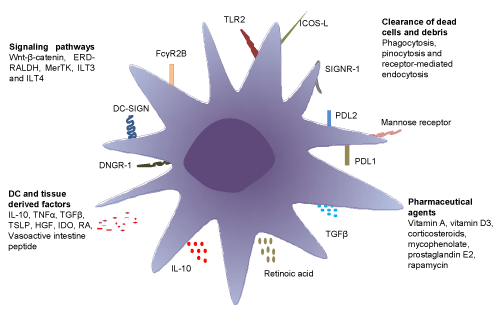
 |
| Figure 1: Mechanisms of sterile inflammation. A substantial number of cells undergo apoptosis and/or necrosis in response to drugs, toxins, chemotherapy, hemorrhage, infarction and ischemia. Some of these parenchymal cells and released endogenous ligands are cleared by tissue resident DCs. In the absence of their uptake by DCs, enormous endogenous ligands released from necrotic cells bind to the Pattern Recognition Receptors (PRRs) on surrounding immune cells or normal parenchymal cells, and mediate sterile inflammation. Reactive oxygen and nitrogen species produced during inflammation can cause oxidation or nitration of proteins, carbohydrates and lipids. These altered ligands bind to PRRs and initiate sterile inflammation. Likewise, proteases released from necrotic cells generate new protein epitopes that can initiate inflammatory responses. Enzymes, and ligand bound antibodies can activate complement and mediate sterile inflammation. |